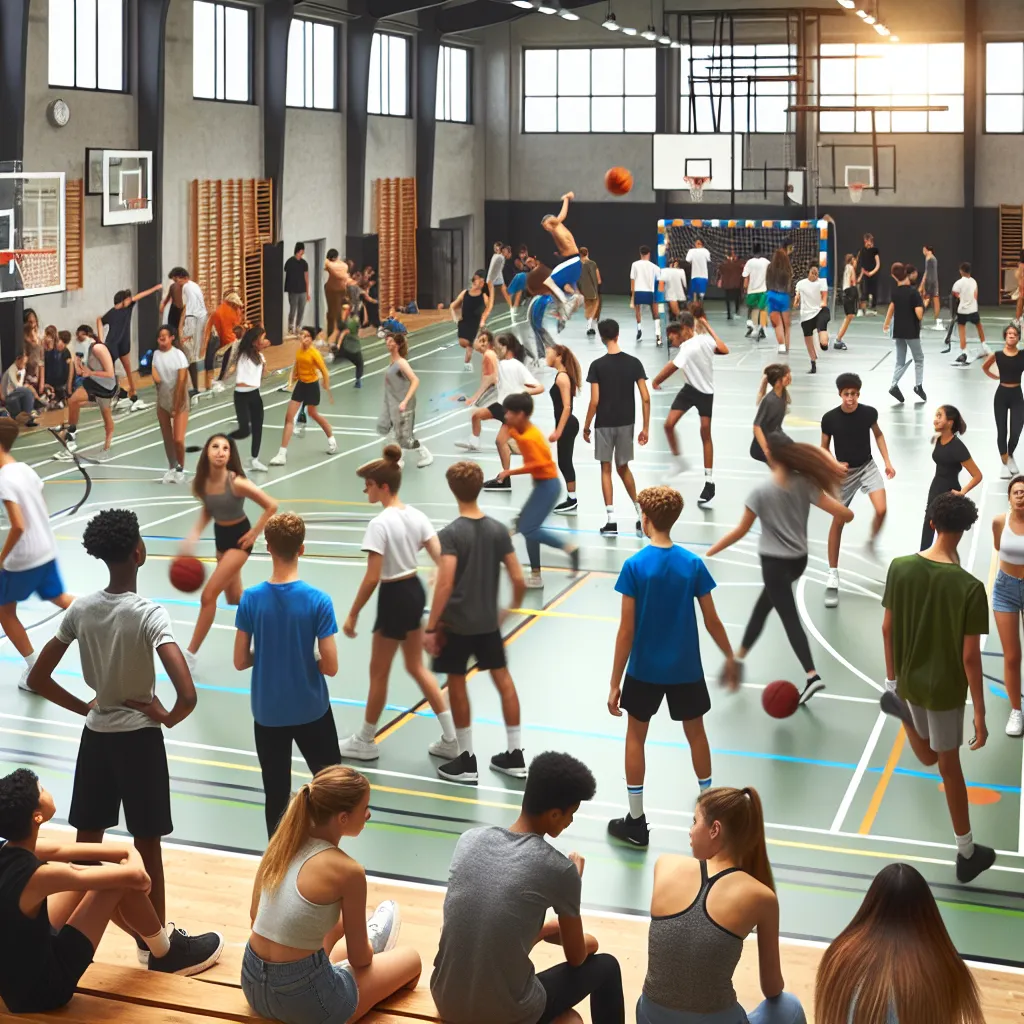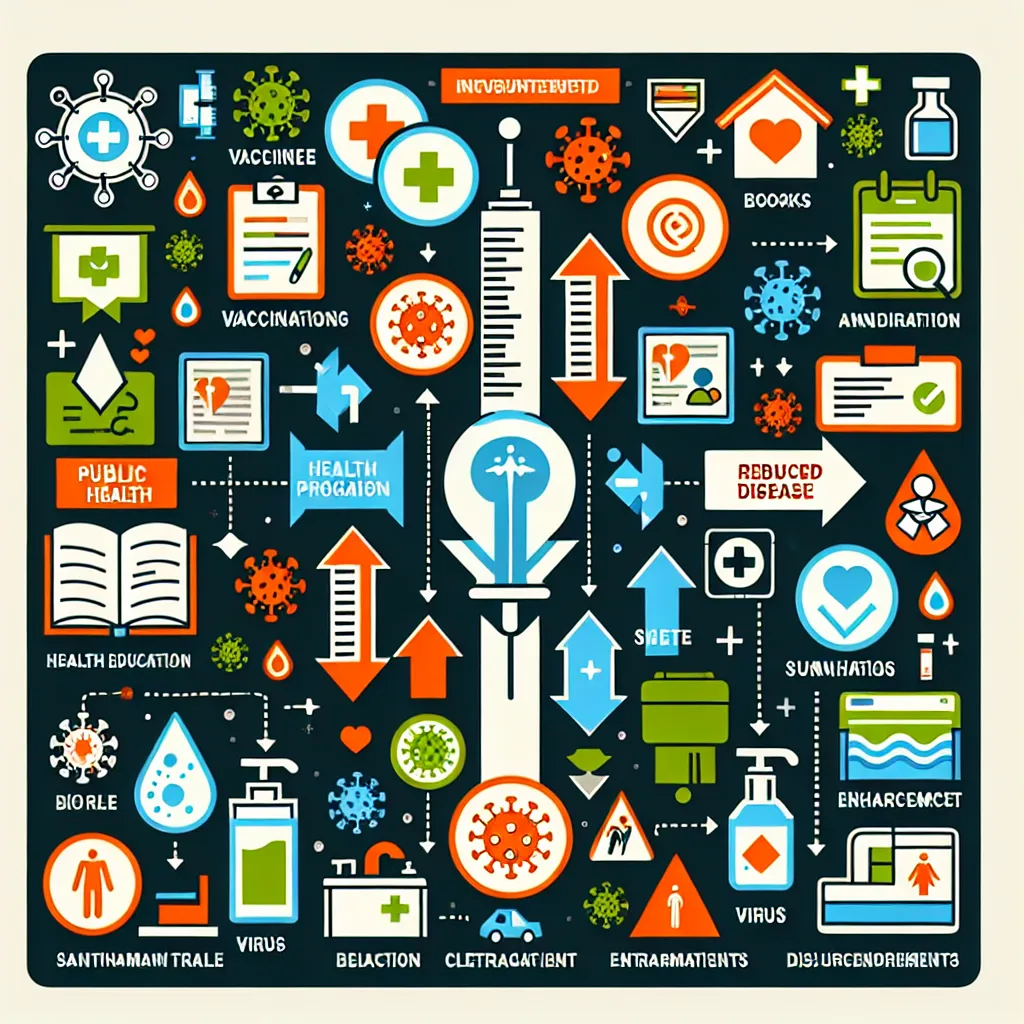The IELTS Reading section is a crucial component of the test, assessing candidates’ ability to comprehend complex texts and extract relevant information. Today, we’ll focus on a topic that has gained significant attention in recent years: promoting physical activity in schools. This subject has appeared in various forms in past IELTS exams and remains highly relevant, making it a potential candidate for future tests.
Nội dung bài viết
Based on trends and current educational priorities, there’s a strong likelihood that passages related to physical activity in schools may appear in upcoming IELTS Reading tests. Let’s dive into a practice exercise to sharpen your skills on this important topic.
 Students exercising in school
Students exercising in school
IELTS Reading Practice Test
Passage: Promoting Physical Activity in Schools
Physical activity is essential for the health and well-being of children and adolescents. However, in many countries, sedentary lifestyles are becoming increasingly common among young people, leading to concerns about obesity, poor health outcomes, and reduced academic performance. Schools play a crucial role in addressing this issue by promoting and facilitating physical activity among students.
One effective strategy for increasing physical activity in schools is to integrate movement into the regular curriculum. This approach, known as “active learning,” involves incorporating physical activities into traditional academic subjects. For example, math lessons can include counting exercises that require students to jump or move around the classroom. Science classes might involve outdoor exploration or hands-on experiments that require physical engagement. By blending movement with learning, schools can simultaneously address both educational goals and physical activity requirements.
Another important aspect of promoting physical activity is the provision of quality physical education (PE) programs. Well-designed PE curricula should offer a variety of activities that cater to different interests and abilities, ensuring that all students can find enjoyable ways to be active. This might include traditional sports, dance, martial arts, or outdoor pursuits. Additionally, PE classes should focus on developing fundamental movement skills and promoting lifelong habits of physical activity, rather than solely emphasizing competitive sports.
Extracurricular activities also play a significant role in encouraging physical activity. Schools can offer a range of after-school sports clubs, dance groups, or fitness classes to provide additional opportunities for students to be active. These programs not only contribute to physical health but also foster social skills, teamwork, and a sense of belonging within the school community.
The physical environment of the school itself can have a substantial impact on activity levels. Designing playgrounds and outdoor spaces that are inviting and conducive to movement can encourage spontaneous physical activity during breaks and lunchtimes. This might include installing playground equipment, creating running tracks, or designating areas for specific activities like basketball or skipping rope.
Technology, often blamed for contributing to sedentary behaviors, can also be leveraged to promote physical activity. Many schools are now incorporating active video games or “exergames” into their PE programs or offering them as extracurricular activities. These games combine physical movement with digital engagement, appealing to tech-savvy students while encouraging exercise.
School policies can significantly influence physical activity levels. Implementing policies that ensure regular breaks for movement throughout the day, such as short “activity bursts” between lessons, can help combat the negative effects of prolonged sitting. Some schools have even experimented with standing desks or “active classrooms” where traditional seating is replaced with options that allow for movement.
Parental and community involvement is crucial for the success of school-based physical activity initiatives. Schools can organize family fitness events, community sports days, or walking school buses to encourage a culture of activity that extends beyond the school gates. Collaborating with local sports clubs and facilities can also provide students with exposure to a wider range of physical activities and potential pathways for continued engagement.
Finally, it’s important to recognize and address barriers to physical activity, such as lack of confidence, body image concerns, or cultural factors. Schools should strive to create an inclusive environment where all students feel comfortable participating in physical activities, regardless of their skill level or background.
By implementing a comprehensive approach that includes curriculum integration, quality PE programs, extracurricular activities, environmental design, technology utilization, supportive policies, community engagement, and barrier reduction, schools can effectively promote physical activity among their students. This not only contributes to improved health outcomes but also enhances academic performance, social skills, and overall well-being, setting the foundation for lifelong healthy habits.
Questions
1-5. Choose the correct letter, A, B, C, or D.
-
According to the passage, which of the following is NOT mentioned as a concern related to sedentary lifestyles among young people?
A) Obesity
B) Poor health outcomes
C) Reduced academic performance
D) Increased screen time -
The concept of “active learning” involves:
A) Separate physical education classes
B) Incorporating movement into academic subjects
C) After-school sports programs
D) Competitive sports activities -
Which of the following is suggested as a focus for physical education classes?
A) Winning competitions
B) Developing elite athletes
C) Promoting lifelong habits of physical activity
D) Specializing in a single sport -
The passage suggests that technology can be used to promote physical activity through:
A) Online PE classes
B) Virtual reality sports
C) Social media challenges
D) Active video games or “exergames” -
According to the text, what role do parents and the community play in promoting physical activity in schools?
A) They are not mentioned as important factors
B) They are responsible for organizing all school sports events
C) They are crucial for the success of school-based initiatives
D) They should replace school staff in supervising physical activities
6-10. Complete the sentences below.
Choose NO MORE THAN THREE WORDS from the passage for each answer.
-
Schools can encourage spontaneous physical activity by designing ____ and outdoor spaces that are inviting.
-
Some schools have experimented with ____ or “active classrooms” to combat the negative effects of prolonged sitting.
-
To extend the culture of activity beyond school, schools can organize ____ or community sports days.
-
It’s important to create an ____ where all students feel comfortable participating in physical activities.
-
A comprehensive approach to promoting physical activity in schools can contribute to improved health outcomes and enhance ____ and social skills.
Answers and Explanations
-
D
Explanation: The passage mentions obesity, poor health outcomes, and reduced academic performance as concerns related to sedentary lifestyles. Increased screen time is not explicitly mentioned in this context. -
B
Explanation: The passage states, “This approach, known as ‘active learning,’ involves incorporating physical activities into traditional academic subjects.” -
C
Explanation: The text mentions that PE classes should focus on “promoting lifelong habits of physical activity, rather than solely emphasizing competitive sports.” -
D
Explanation: The passage states, “Many schools are now incorporating active video games or ‘exergames’ into their PE programs or offering them as extracurricular activities.” -
C
Explanation: The text explicitly states, “Parental and community involvement is crucial for the success of school-based physical activity initiatives.” -
playgrounds
Explanation: The passage mentions “Designing playgrounds and outdoor spaces that are inviting and conducive to movement.” -
standing desks
Explanation: The text states, “Some schools have even experimented with standing desks or ‘active classrooms’.” -
family fitness events
Explanation: The passage suggests that schools can “organize family fitness events, community sports days.” -
inclusive environment
Explanation: The text mentions, “Schools should strive to create an inclusive environment where all students feel comfortable participating.” -
academic performance
Explanation: The final paragraph states that this approach “enhances academic performance, social skills, and overall well-being.”
Common Mistakes to Avoid
When tackling IELTS Reading passages similar to this one, be aware of these common pitfalls:
-
Overlooking synonyms: The test often uses synonyms or paraphrases of key terms. For example, “sedentary lifestyles” might be referred to as “lack of physical activity” in the questions.
-
Falling for distractors: Some answer options may seem plausible but are not supported by the text. Always refer back to the passage to verify your choice.
-
Misinterpreting negatives: Questions like the first one, which asks for what is NOT mentioned, require careful attention. Double-check that you’ve correctly identified the excluded information.
-
Rushing through longer passages: This text is quite lengthy, which is common in IELTS. Pace yourself and use skimming and scanning techniques effectively.
-
Ignoring context: Some answers require understanding the broader context of a statement, not just matching individual words.
Key Vocabulary
Here are some challenging words from the passage, along with their definitions:
-
Sedentary (adjective) /ˈsed.ən.ter.i/: Characterized by much sitting and little physical activity.
-
Curriculum (noun) /kəˈrɪk.jʊ.ləm/: The subjects comprising a course of study in a school or college.
-
Extracurricular (adjective) /ˌek.strə.kəˈrɪk.jʊ.lər/: Activities pursued in addition to the normal course of study.
-
Spontaneous (adjective) /spɒnˈteɪ.ni.əs/: Performed or occurring as a result of a sudden impulse without premeditation.
-
Conducive (adjective) /kənˈdjuː.sɪv/: Making a certain situation or outcome likely or possible.
-
Leverage (verb) /ˈlev.ər.ɪdʒ/: Use (something) to maximum advantage.
Grammar Focus
Pay attention to the use of conditional sentences in the passage. For example:
“By implementing a comprehensive approach […], schools can effectively promote physical activity among their students.”
This is an example of a zero conditional sentence, used to express general truths or scientific facts. The structure is:
If/When + present simple, present simple
Practice forming similar sentences related to the topic of physical activity in schools.
Tips for High Scores in IELTS Reading
-
Time management is crucial. Allocate your time wisely across all sections of the Reading test.
-
Read the questions before the passage to know what information to look for.
-
Use skimming and scanning techniques to quickly locate relevant information.
-
Pay attention to transition words and topic sentences to understand the passage’s structure.
-
Practice regularly with a variety of text types and question formats to improve your skills and speed.
-
Develop your vocabulary, particularly in academic and semi-academic contexts.
-
Don’t leave any questions unanswered – there’s no penalty for guessing in IELTS Reading.
Remember, success in IELTS Reading comes with practice and familiarity with the test format. Keep working on your skills, and you’ll see improvement over time.
For more IELTS preparation resources, check out our articles on how to promote mental health in schools and the role of outdoor education in child development. These topics are closely related to physical activity in schools and can provide additional context and vocabulary for your IELTS preparation.


